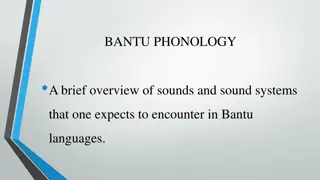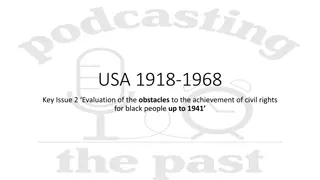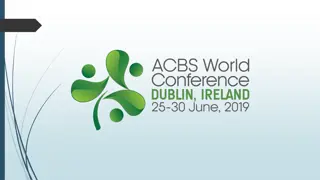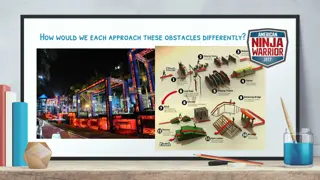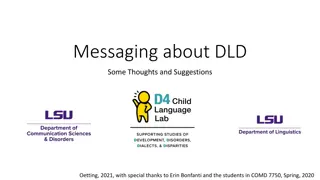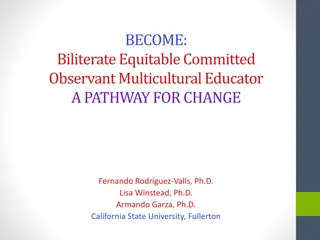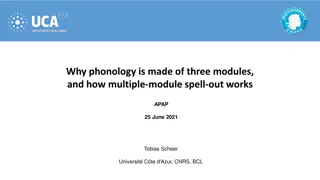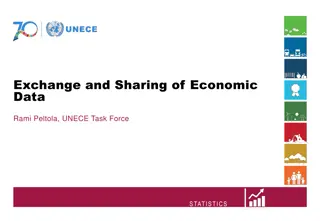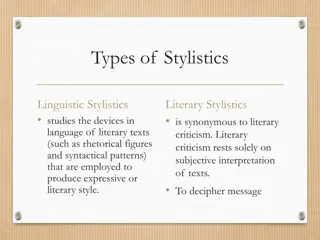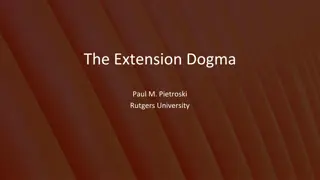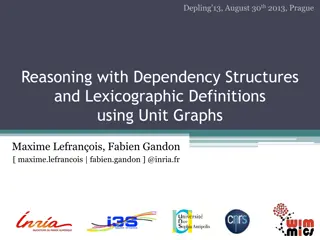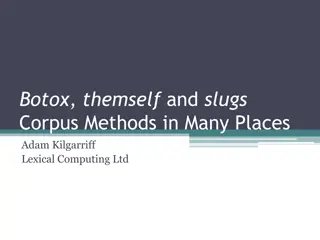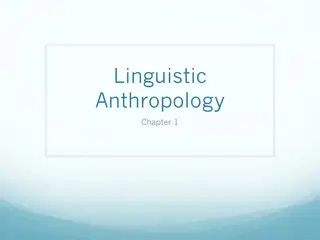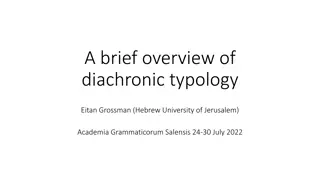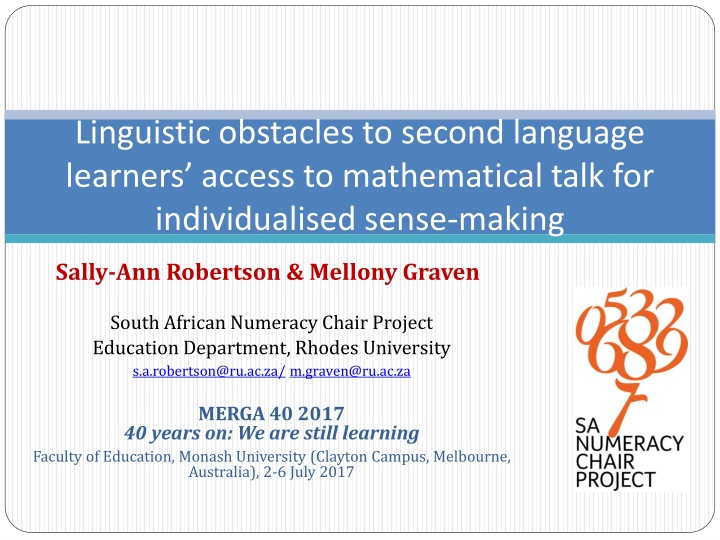
Overcoming Linguistic Barriers for Math Sense-Making in Second Language Learners
Explore the challenges faced by second language learners in accessing mathematical talk for individualized sense-making, with a focus on South African educational contexts. The study delves into the impact of language policies, bilingualism, and the use of language in math classrooms. Potential solutions like code-switching and translanguaging are discussed to enhance cognitive development.
Download Presentation

Please find below an Image/Link to download the presentation.
The content on the website is provided AS IS for your information and personal use only. It may not be sold, licensed, or shared on other websites without obtaining consent from the author. If you encounter any issues during the download, it is possible that the publisher has removed the file from their server.
You are allowed to download the files provided on this website for personal or commercial use, subject to the condition that they are used lawfully. All files are the property of their respective owners.
The content on the website is provided AS IS for your information and personal use only. It may not be sold, licensed, or shared on other websites without obtaining consent from the author.
E N D
Presentation Transcript
Linguistic obstacles to second language learners access to mathematical talk for individualised sense-making Sally-Ann Robertson & Mellony Graven South African Numeracy Chair Project Education Department, Rhodes University s.a.robertson@ru.ac.za/ m.graven@ru.ac.za MERGA 40 2017 40 years on: We are still learning Faculty of Education, Monash University (Clayton Campus, Melbourne, Australia), 2-6 July 2017
Background South African learners low levels of mathematical sense- making A language policy that promotes additive bilingualism; but socio- economic aspirations that promote English at the expense of learners mother tongues . Mathematical sense-making Language (L1/L2) Literacy
Concern Learners playground joie de vivre in L1 is shut down upon entry into the L2-dominated mathematics classroom environment. Use of L2 constitutes a barrier to the use of language as a tool for mathematical sense- making.
Context Two Grade 4 mathematics classrooms in township schools: Ms M s LoLT: Straight for English from Grade 1 Ms P s LoLT: First year of transition to English (MT - Grades 1-3) Q: How do Ms M & Ms P use talk in supporting their learners mathematical sense-making?
Go for Code- switching? Go for the Language of power? As we learn more about the power of language, and its penetration into everything we do and think, so we also come to realize that intervening in the processes of language is an extraordinarily complex affair Go for Bi- /Multi- Lingualism? Should we perhaps try Translanguaging? Could we go for first prize cognitively Mother Tongue? (Halliday, 2007, p. 12)
Children have to learn to use language for a range of purposes and in a range of cultural and situational contexts (Gibbons, 2003, p. 250). MODE CONTINUUM More spoken-like Interactive, face to face Context dependent (linguistic + physical cues) Dynamic & responsive Spontaneous Everyday, common-sense lexis Lexically sparse (mainly high frequency words) More written-like Non-interactive, mono-logic Context independent Static Polished More formal and abstract lexis Relatively lexically dense [Adapted from Eggins (2004) and Gibbons (2006)]
Cummins BICs/ CALP distinction TWO kinds of classroom talk: Basic Interpersonal Communication Skills (BICS), and Cognitive Academic Language Proficiency (CALP). Both are necessary in the classroom BICS is the more important for initial sense-making CALP then becomes the key to deepening engagement in mathematical discourse.
Teachers comments (1) Ms M: Language is very important, because maths isn t only about numbers: add this , subtract this . There s lots of language involved. There s English language first of all: that is a challenge to these learners. And also the maths language itself. So if one doesn t have English as a language and also the maths language, then there s no learning and teaching that is taking place. Ms M s emphasis appeared to be on inculcating the legitimate text . She did not significantly disrupt her school s straight for English policy. Her pushing her learners to make statements of mathematical fact in L2(even though many may not yet have conceptually grasped the fact/s) appeared to pay-off in terms of national assessments.
Teachers comments (2) Ms P: They are supposed to be taught in English, so I m supposed to speak English, but I can t do otherwise. So most of the time, I speak Xhosa the one that they understand. Ms P allowed extensive use of L1 in order to facilitate her learners mathematical sense-making. This L1 emphasis appeared , however, to compromise her learners as regards national assessments, although ...
ANA Mathematics % Scores (2014) Ms M 37.9 Ms P 27.3 National Average 37 SANCP S Mathematical Proficiency Assessment % scores (2014) Conceptual Understanding Competence 61 25 52 34 Strategic Adaptive reasoning 41 64 Overall Average 42.3 50 Ms M Ms P 51 25 29 35 Cohort Average
Thank you! The financial support provided by the FirstRand Foundation (with RMB), Anglo American Chairman s fund, the DST and the NRF is gratefully acknowledged; as is the unerring intellectual and emotional support of all of the members of the SANCP team.
References: Cummins, J. (1994). The acquisition of English as a second language. In K. Spangenberg- Urnschat & R. Pritchard (Eds.), Kids come in all languages: Reading instruction for ESL students (13th printing, 2005) (pp. 36-62). Newark, Delaware: International Reading Association Eggins, S. (2004).. Eggins, S. (2004). An introduction to systemic functional linguistics. London: Continuum. Gibbons, P. (2003). Mediating language learning: Teacher interactions with ESL students in a content-based classroom. TESOL Quarterly, 37(2), 247-273. Halliday, M. A. K. (2007). Language and Education. Volume 9 in the Collected Works of M. A. K. Halliday. Edited by Jonathan J. Webster London: Continuum. South Africa. Department of Basic Education. (2010). The status of the language of learning and teaching (LOLT) in South African public schools: A qualitative overview. Pretoria: Department of Basic Education.


